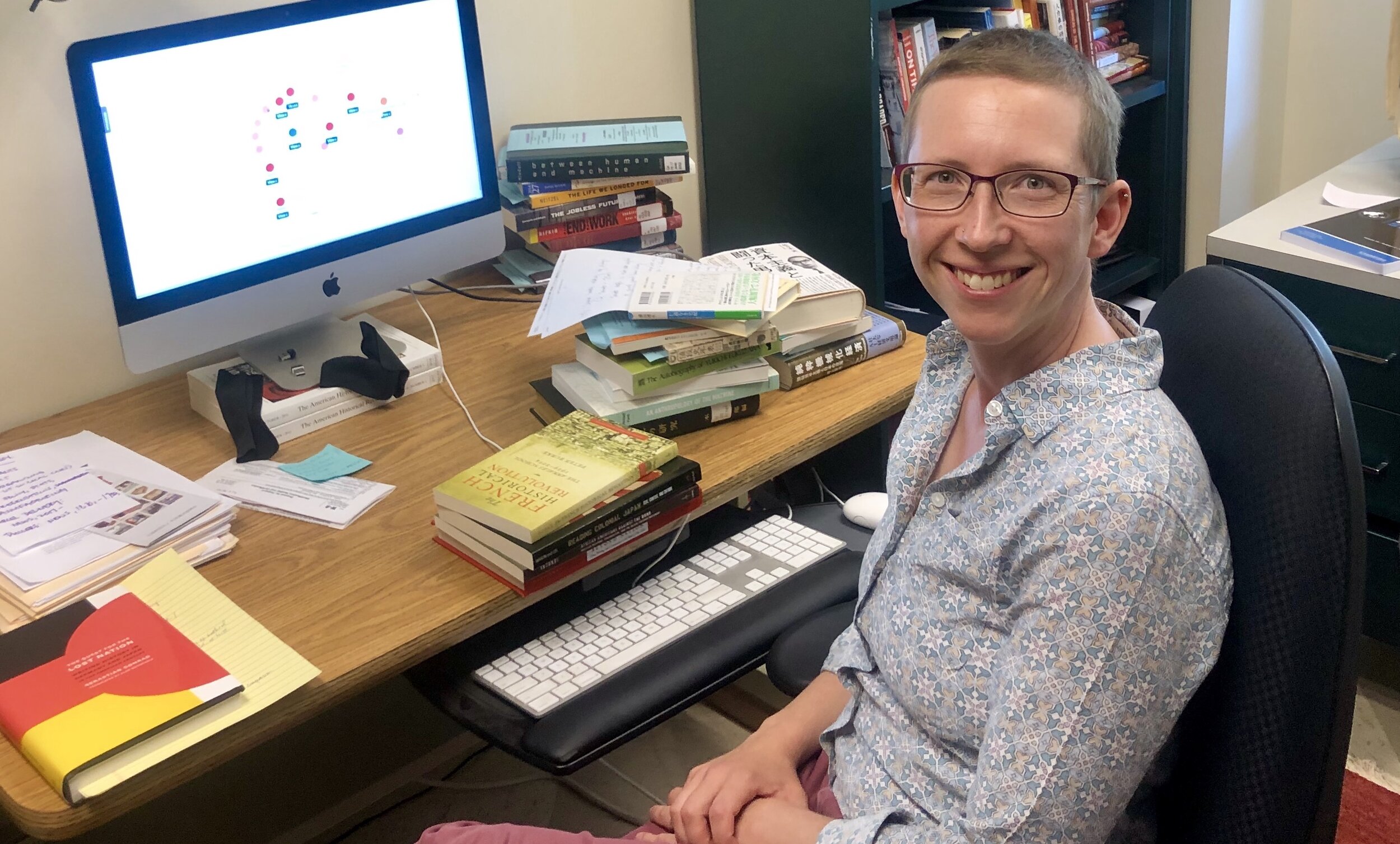By Raymond Matthews
Kate McDonald, A UC Santa Barbara Modern East Asian History professor, has received a $100,000 federal grant to improve and expand her new website “Bodies and Structures: Deep-Mapping Modern East Asian History.” Bodies and Structures was launched in January of 2019 as an online platform for researching and teaching histories of Japan and other cultures in the region.
McDonald and David Ambaras, a historian at North Carolina State University, have set out to tell narratives about national and ethnic groups using spatial history, which examines in a non-linear fashion how different cultures interacted with one another through geographic space. When using their website, one can track the movements of Japanese imperialists and historical figures across all of Asia, and in turn, learn how historic movements shaped the continent.
The grant from the National Endowment of Humanities will allow the scholars to add more primary sources to the Bodies and Structures website’s interactive digital modules, and allow users to search for and organize those modules using and key words and phrases.
McDonald recently sat down for an interview to describe how her new project employs a user-friendly web interface to present history in unprecedented ways.
Q: Could you describe the basic features and functionality of Bodies and Structures?
A: The website itself has seven independent content modules, so people can tell stories ranging from women sneaking off from Japan to marry people in China and become pirates to anti-colonial activists in Taiwan. It really is a wide range of materials, and you can read these histories on their own with interactive media content, but the site also enables you to mix and match the modules in interesting ways. This enables users to interpret histories in personalized ways as opposed to just reading narratives as we’ve designed them.
Academically, we usually operate in a way where we view one version of events from a select few perspectives, which can be a real disservice when you’re trying to interpret historical events. So you can see through the site how different groups and cultures interplay with one another with regard to space, which in turn highlights histories that have gone untaught and somewhat unnoticed.
Q. You recently received a $100,000 digital humanities advancement grant from the National Endowment for the Humanities’ Office of Digital Humanities. How do you see this grant increasing your resources and broadening your website’s functionality?
A: This grant is going to create really amazing things. On the technical level, we’re creating two new sets of tools that will make the site much more user-directed. For instance, we are creating a new tool called “lenses,” which will allow users to search for and organize resources by certain topics and key phrases. The second feature is called “user workspace,” which will allow any registered users to track how they move through the site. So, for instance, if you go from reading about Chinese colonization in Mongolia to Japanese department stores and have no idea how you got there, the site will track your steps for you. Aside from those new features, the grant will also finance our face-to-face work with newsletter contributors who help to create and contribute to the modules that we have available on the site.
Q: Since East Asian history can be glossed over and neglected in world history at large, do you think that an interface like yours will bring more visibility to this topic?
A: I certainly hope so. One of our goals is to bring the histories of East Asia into the larger field of spatial humanities, which is very much focused on the United States and Europe. The other thing I set out to do was to tell histories of East Asia that have themes and motifs that can then be related to world history in multiple contexts.
Q: What in particular about Bodies and Structures lends itself well to interpreting spatial histories?
A: That’s really the main focus, and Scaler allows you to recombine elements of a webpage in infinite ways… in order to better understand the histories that you’re learning. Our site also provides geo-spatial meta-data, so you can view everything within the context of a Google map, and even arrange pages alphabetically and start exploring that way. The site really allows the user to mix and match data and information in whatever way they see fit.
Q. How do you think that spatial history, as opposed to linear history, can give users a broader perspective of East Asian History?
A: We call it liberating mapping. One thing that we know to be true is that people move through spaces differently depending on their identities and how the world around them interprets those identities. In different periods of time, people have different senses of what a natural arrangement of space is. For instance, the modern concept of a state where one state has jurisdiction over a certain territory would make no sense in the 12th century.
Even though we know these things to be true, in academics we usually operate in a way where we view one version of events from a select few perspectives, which can be a real disservice when you’re trying to interpret historical events. So, you can see through the site how different groups and cultures interplay with one another with regard to space, which in turn highlights histories that have gone untaught and somewhat unnoticed.
Raymond Matthews is a third year Political Science major at UC Santa Barbara. He is a Web and Social Media Intern for the Division of Humanities and Fine Arts.



